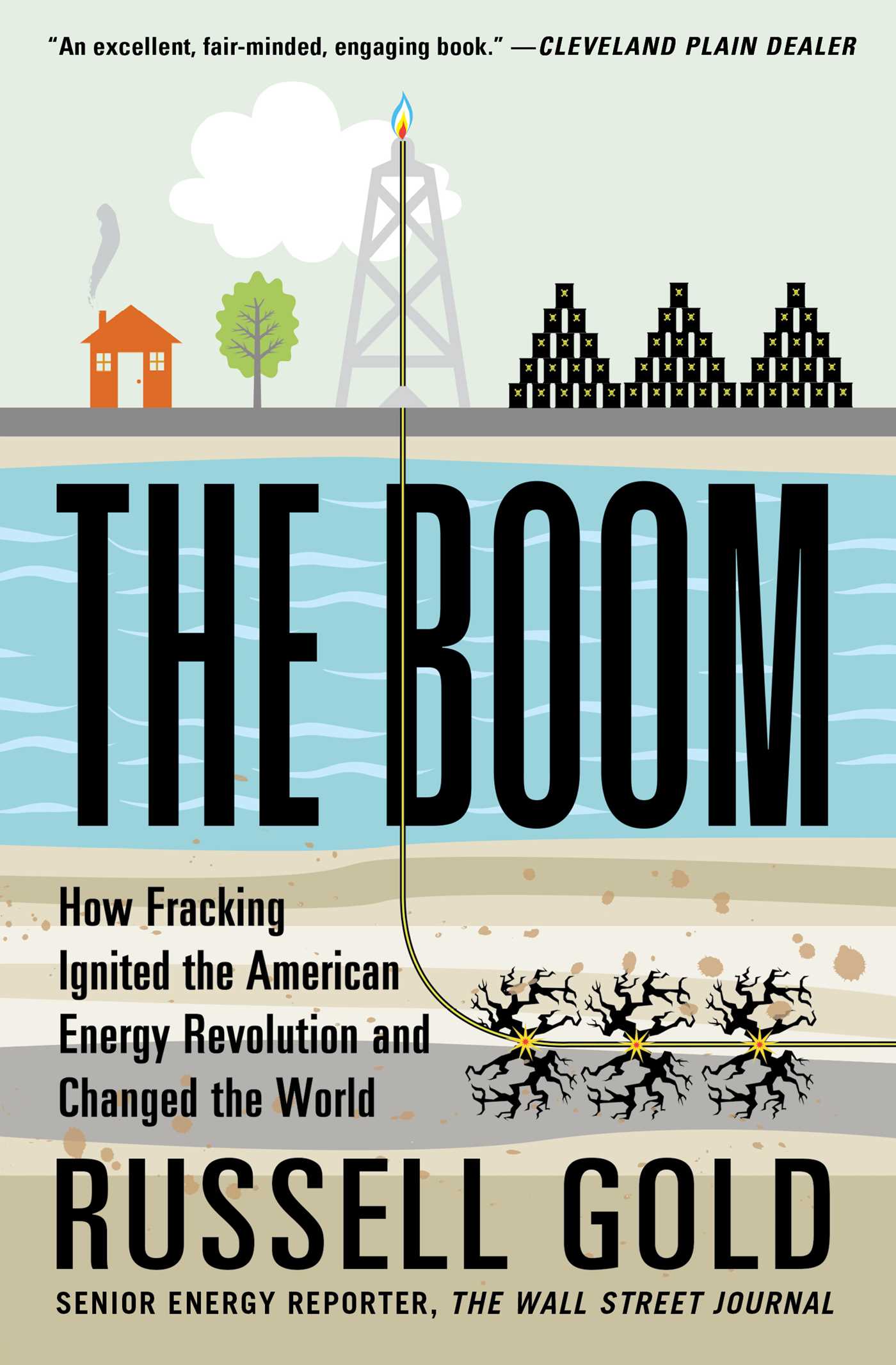The Boom by Russell Gold

Deep underground across much of the Earth’s surface, enormous amounts of natural gas are trapped inside of layers of shale rock. Natural gas originating inside of shales had long been considered an unviable energy source because of the impermeability of shale rock. However, thanks to the rise of hydraulic fracturing (“fracking”), it is now economically possible to drill wells into shale rock and extract large amounts of natural gas. Fracking a well involves pumping enormous amounts of “frack fluid” (a mix of water, sand, and chemicals) into the well at extremely high pressures, causing the surrounding shale rock to crack. Thanks to all the cracks, natural gas is then free to flow into the well and be extracted at the surface.
Fracking is not a novel idea; the first fracked shale well dates all the way back to 1947. However, it was only in the late 1990s and early 2000s that the technology finally matured, largely thanks to innovations in frack fluid mixtures and the rise of horizontal well drilling. With shale deposits suddenly becoming economically viable, gas companies across the US went on a mad scramble to take advantage of this new gold rush.
The fracking boom has brought gas exploration to areas of the US with little prior exposure to drilling. When viable shales are found, gas companies send swarms of “land men” to visit local landowners and offer them money in exchange for the right to drill on their land. Landowners frequently have anxieties about truck traffic, noise, air quality, the permanent loss of arable land, and the possibility of groundwater contamination. At the same time, landowners also recognize that if their neighbors sign leases while they don’t, they would still experience much of the disruption of gas drilling without reaping any of the economic benefits. Landowners often accept their fate and sign away the rights to their land despite having misgivings. Gas drilling ends up a mixed blessing for rural communities, offering lease income for landowners and local blue-collar jobs, while also heavily industrializing formerly pristine land.
Fracking arrived at a time when the prevailing view was that easily-obtainable fossil fuel deposits in the US were mostly gone. Natural gas, long considered a scarce fuel, has boomed in both production and consumption thanks to the rise of fracking. An abundance of cheap gas has helped spur US economic growth, strengthened the US dollar, created a resurgence of US manufacturing jobs, brought lease income to many rural landowners around the country, and weakened the economic clout of OPEC.
Natural gas’s energy market share has increased largely at the expense of coal, which produces twice as much carbon per unit of energy. The US is exceptional among industrialized countries in that its carbon emissions are decreasing rather than increasing. Proponents of fracking, including the gas companies themselves, claim that fracking is an environmentally-friendly technology because natural gas is a low-carbon alternative to coal. Critics of fracking point out that the natural gas boom is a temporary half-measure and not the final destination on the path towards a renewable low-carbon future. Environmentalists worry about methane leakage from wells, the relative economic uncompetitiveness of renewable alternatives to gas, the long-term threat of groundwater pollution, and the gas industry’s often-spotty environmental record. Government regulators frequently get irritated by fracking companies’ lack of investment in safety measures and their “drill first and ask questions later” mentality. Either way, natural gas appears poised to act as a “bridge fuel”, satisfying the US’s energy demands in the short term while giving more time for renewable and low-carbon energy sources to evolve.
